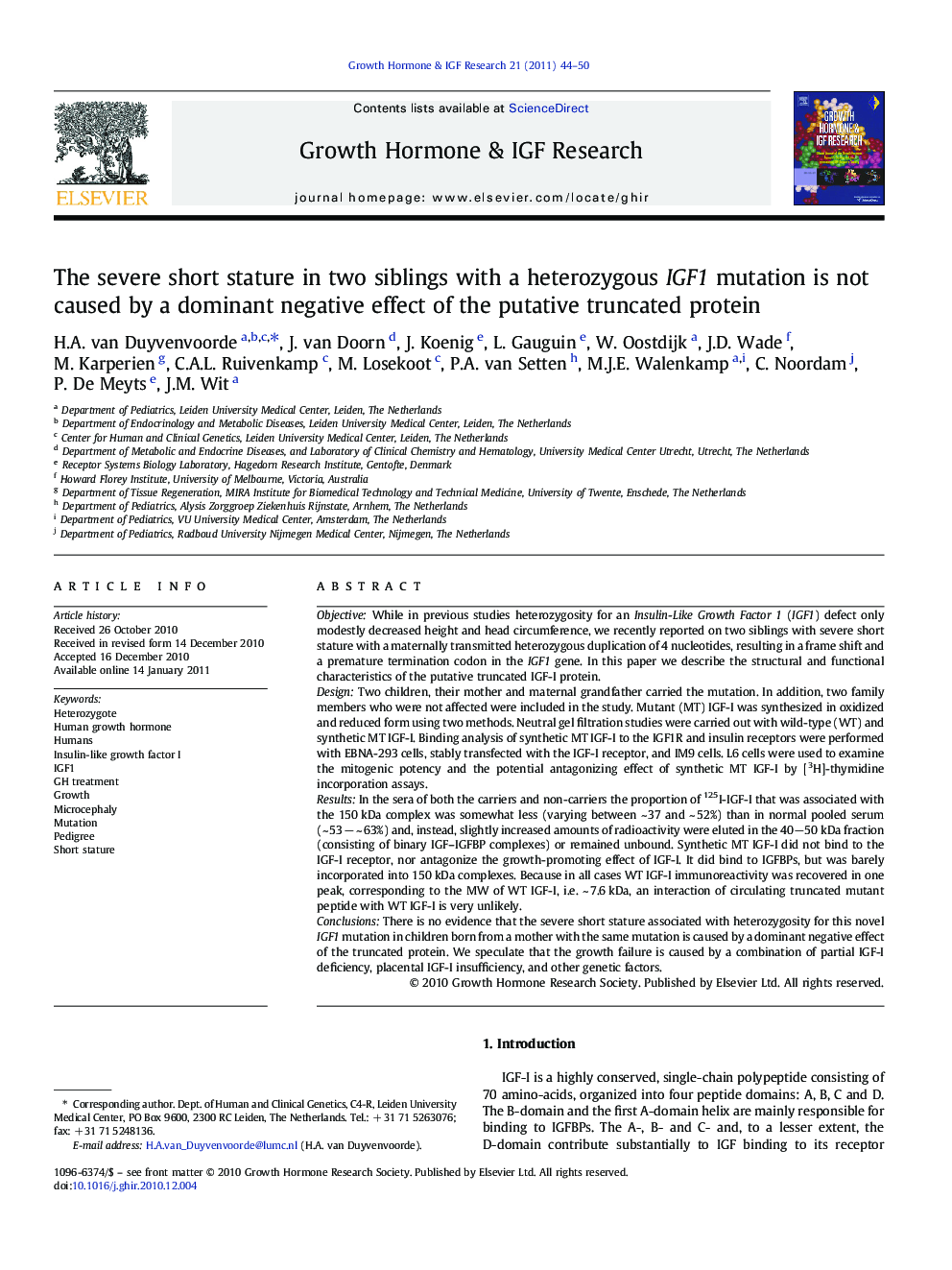| Article ID | Journal | Published Year | Pages | File Type |
|---|---|---|---|---|
| 2802934 | Growth Hormone & IGF Research | 2011 | 7 Pages |
ObjectiveWhile in previous studies heterozygosity for an Insulin-Like Growth Factor 1 (IGF1) defect only modestly decreased height and head circumference, we recently reported on two siblings with severe short stature with a maternally transmitted heterozygous duplication of 4 nucleotides, resulting in a frame shift and a premature termination codon in the IGF1 gene. In this paper we describe the structural and functional characteristics of the putative truncated IGF-I protein.DesignTwo children, their mother and maternal grandfather carried the mutation. In addition, two family members who were not affected were included in the study. Mutant (MT) IGF-I was synthesized in oxidized and reduced form using two methods. Neutral gel filtration studies were carried out with wild-type (WT) and synthetic MT IGF-I. Binding analysis of synthetic MT IGF-I to the IGF1R and insulin receptors were performed with EBNA-293 cells, stably transfected with the IGF-I receptor, and IM9 cells. L6 cells were used to examine the mitogenic potency and the potential antagonizing effect of synthetic MT IGF-I by [3H]-thymidine incorporation assays.ResultsIn the sera of both the carriers and non-carriers the proportion of 125I-IGF-I that was associated with the 150 kDa complex was somewhat less (varying between ~ 37 and ~ 52%) than in normal pooled serum (~ 53 − ~ 63%) and, instead, slightly increased amounts of radioactivity were eluted in the 40−50 kDa fraction (consisting of binary IGF–IGFBP complexes) or remained unbound. Synthetic MT IGF-I did not bind to the IGF-I receptor, nor antagonize the growth-promoting effect of IGF-I. It did bind to IGFBPs, but was barely incorporated into 150 kDa complexes. Because in all cases WT IGF-I immunoreactivity was recovered in one peak, corresponding to the MW of WT IGF-I, i.e. ~ 7.6 kDa, an interaction of circulating truncated mutant peptide with WT IGF-I is very unlikely.ConclusionsThere is no evidence that the severe short stature associated with heterozygosity for this novel IGF1 mutation in children born from a mother with the same mutation is caused by a dominant negative effect of the truncated protein. We speculate that the growth failure is caused by a combination of partial IGF-I deficiency, placental IGF-I insufficiency, and other genetic factors.
